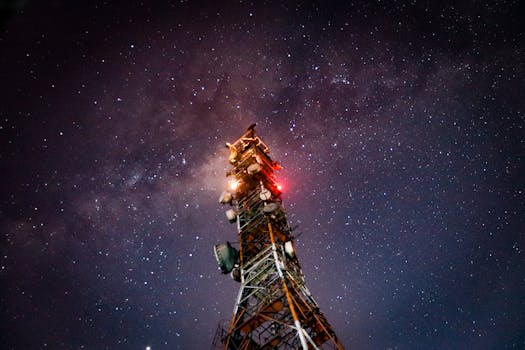
MEO Satellites: Revolutionizing Global Communication with Medium Earth Orbit Technology
MEO Satellites are at the forefront of the satellite communication industry, providing a faster and more reliable alternative to traditional Geostationary Earth Orbit (GEO) satellites. With their unique medium earth orbit, these satellites are capable of offering lower latency and higher throughput, making them an attractive option for a wide range of applications, from broadband internet to mobile connectivity.
The focus on MEO satellites has been increasing in recent years, as the demand for global connectivity continues to grow. By operating at an altitude of approximately 2,000 to 36,000 kilometers, MEO satellites are able to provide a more efficient and cost-effective solution for satellite communication. This is because they require less power to transmit signals, resulting in longer satellite lifetimes and reduced maintenance costs.
How MEO Satellites Work
MEO satellites work by using a network of satellites in medium earth orbit to provide continuous coverage of the Earth’s surface. Each satellite is equipped with a transponder, which receives and retransmits signals to and from the ground. The satellites are also equipped with antennas, which are used to transmit and receive signals to and from the ground. The signals are then transmitted to a ground station, where they are processed and distributed to the end-user.
The medium earth orbit of MEO satellites allows them to provide a higher elevation angle than GEO satellites, resulting in a stronger signal and better connectivity. Additionally, MEO satellites are less prone to interference from other satellites and terrestrial systems, providing a more reliable connection.
Applications of MEO Satellites
MEO satellites have a wide range of applications, including broadband internet, mobile connectivity, navigation, and earth observation. They are particularly useful for providing connectivity in remote or underserved areas, where traditional terrestrial infrastructure is limited or non-existent. MEO satellites are also used for disaster recovery and emergency response, providing a critical communication link in times of crisis.
In addition to these applications, MEO satellites are also being used for scientific research and exploration. They provide a unique platform for conducting experiments and gathering data on the Earth’s atmosphere, oceans, and land surfaces. MEO satellites are also being used for space weather monitoring, providing critical data on solar activity and its impact on the Earth’s magnetic field.
Benefits and Challenges of MEO Satellites
The benefits of MEO satellites are numerous, including faster and more reliable connections, lower latency, and higher throughput. They also offer a more cost-effective solution for satellite communication, with longer satellite lifetimes and reduced maintenance costs. However, there are also challenges associated with MEO satellites, including the need for more complex ground systems and the potential for interference from other satellites and terrestrial systems.
Despite these challenges, the future of MEO satellites looks promising. With the increasing demand for global connectivity and the need for more efficient and cost-effective solutions, MEO satellites are likely to play a major role in the satellite communication industry for years to come. As technology continues to evolve and improve, we can expect to see even more innovative applications of MEO satellites, from providing connectivity in remote areas to enabling new scientific discoveries and exploration.